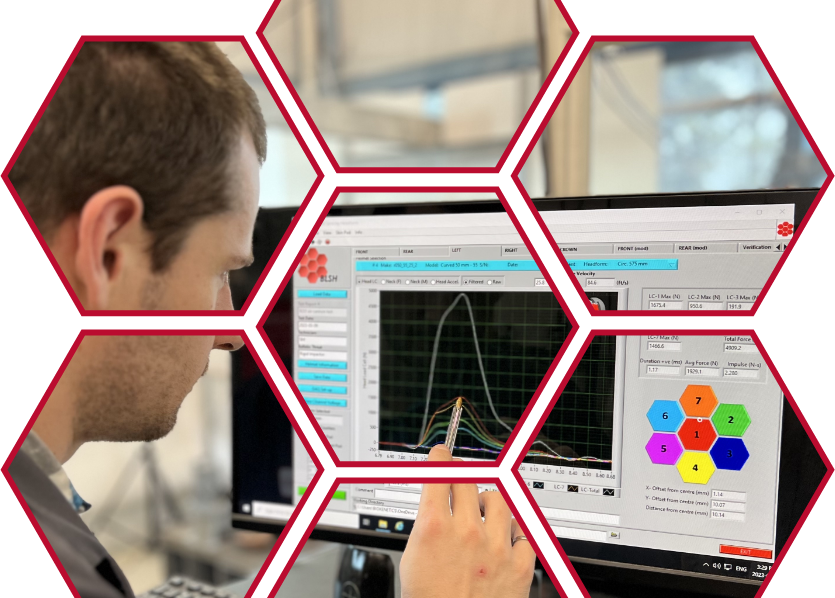Blunt force trauma (BFT) is a significant safety concern across multiple industries globally, particularly in fields like law enforcement, the military, and industrial sectors, where the risk of sudden impacts and exposure to lethal force is much higher than in other vocations. Blunt force injuries are among the highest causes of fatalities identified by forensic pathologists (source), as well as a common source of serious, life-altering injuries, including broken bones, internal bleeding and more.
With global conflict on the rise and today’s domestic personnel (law enforcement officers, security, etc) facing elevated risk from newer ammunition rounds and advanced weaponry, the need for effective protective gear is more paramount than ever. It is, therefore, just as vital to ensure that modern armour systems (particularly body armour) are prepared to protect wearers against both ballistic impacts and blunt force trauma.
Below, we’ll explore the real-world risks of blunt force trauma in various industries and how modernizing armour plays a crucial role in mitigating these risks. Read on to learn more.
Blunt Force Trauma: Addressing A Persistent Threat
Blunt force trauma occurs when a blunt (not sharp) object or force impacts the body without penetrating it. Unlike ballistic trauma, which entails a projectile penetrating the body’s natural barrier, BFT occurs through forceful, typically abrupt contact. Being struck by heavy objects (intentionally or otherwise), serious falls or sudden collisions with a hard surface all contribute to the occurrence of blunt force injuries, and while they may not appear as immediately life-threatening as penetrative strikes, BFTs can be particularly insidious due to the unseen nature of many injuries that often hides how severe the wounds are.
By industry, common causes of blunt force injuries include:
Military and Law Enforcement
Soldiers and law enforcement officers face the constant risk of blunt force trauma in combat situations, tactical operations, and even daily patrol duties. Everything from explosions to vehicle collisions and subject engagement holds the potential to generate kinetic energy that may lead to serious harm should body armour fail to effectively dissipate force. It is also crucial to note that while body armour may be effective at stopping a ballistic projectile (ammunition), that does not intrinsically suggest it will be able to distribute kinetic energy in an effective manner so as to avoid BFT.
Industrial and Construction Work
Workers in industrial settings can experience blunt force injuries due to a number of workplace hazards, including the risk of falls from scaffolding, being struck by moving equipment or machinery, and more. Protective gear such as helmets and padding are designed to absorb or redistribute impact forces is essential for these workers’ safety.
Sports and Recreational Activities
High-impact sports such as football, hockey, or boxing leave athletes vulnerable to injuries caused by concussive force, either from direct hits or collisions. Protective gear like helmets and padding are essential to reduce the risk of concussions, fractures, and other traumatic injuries.
Exposing The Challenge of Evolving Threats for Military and Law Enforcement Personnel
One of the biggest challenges we face in neutralizing the risk of blunt force injury in the law enforcement and military sectors is the fact that modern weaponry, including ammunition capabilities, is ever-evolving. As firearm technology advances, so too does the lethality and force behind projectiles, meaning that “traditional” body armour systems may no longer be adequately equipped to face the level of force delivered by modern rounds (which is, in part, what spurred the recent updates to the NIJ’s ballistic level ratings). This, paired with the increasing use of non/less-lethal weapons for riot control and deterrence in mob-level scenarios, puts armour wearers at risk for blunt force trauma caused by both standard ammunition and blunt deterrent objects, including flexible and inflexible rounds.
Adapting to Modern Threats: What Comes Next?
With these modern threats in mind, both military and law enforcement agencies across the globe now face a pressing demand to adapt their current resources to meet new challenges without compromising the safety of their personnel. Hard body armour solutions are expected to encompass nearly two-thirds of the personal protective gear market by 2034 (source).
While manufacturers rapidly seek to address evolving threats, we must focus on sufficiently retrofitting older armour to handle current threats. This involves improving impact resistance through the integration of newer materials like advanced composites or ceramics and adapting older units into modular components that are more flexible and easier to tailor to different threat levels.
Both retrofitted armour and future developments must focus on adopting a multi-threat protection approach that offers comprehensive protection against a range of threats, from bullets to blunt force impacts, as well as a commitment to rigorous testing that enables manufacturers and designers to accurately assess and address threats proactively, rather than reactively.
Creating a Safer Future with Biokinetics’ Advanced Testing Services
Biokinetics is proud to help create a safer future for those at risk of blunt force injuries on the job through specialized testing capabilities that address both ballistic and blunt force trauma. Our Behind Armour Blunt Trauma (BABT) evaluation and body impact testing critically evaluate core risks, such as how much deformation and force a body sustains when a projectile is stopped by armour and how effectively protective equipment shields against non-ballistic blunt force impacts, such as falls, vehicle accidents, or strikes from heavy objects by replicating real-world scenarios for results you can trust when it matters most.
Founded in 1975, our team remains dedicated to the mitigation and prevention of impact injuries through the extensive research and assessment we conduct at our industry-leading testing facilities. Backed by decades of experience and a team of leading engineers who put safety and innovation first, we are proud to support a safer future through increased threat assessment and understanding.
Learn more about our impact injury research services by contacting our team directly today!

